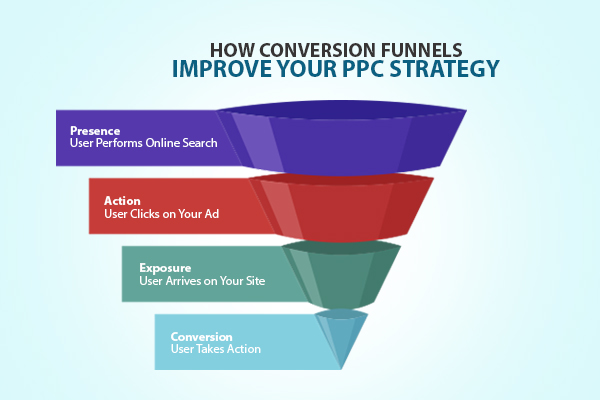
How Conversion Funnels Improve Your PPC Strategy
Often, digital marketers limit their advertisements and keywords to only the top of the conversion funnel. What they do not realize is that they lose customers at every stage of the conversion funnel, and not just the top.
Understanding how conversion funnels work and incorporating those lessons into your pay-per-click strategy can reap substantial dividends for a brand or organization.
Let’s first understand what conversion funnels are, and how they affect your PPC strategy
A conversion funnel is a journey a customer takes to subscribe to a service or purchase a commodity. This includes the time taken to search for it, research it, navigate through different brands or websites and finally purchase the product.
A pay-per-click (PPC) strategy is a form of paid advertising where the owner pays the advertiser on the basis of the number of clicks on their advertisements. PPC can be very effective in keeping your customers interested in your brand, especially if you tailor your ads on the basis of where your customer is in the conversion funnel. The key here is to customize keywords on the basis of what your customer would be searching for when at the top, the middle and the bottom of the funnel.
Here are some ways you can ensure optimization at every level of the funnel.

Top of the Funnel
At this point, the customer is only browsing or looking for a solution to an existing problem. When your ad-copy has keywords that are the same as the search keyword that the customer enters, their chance of clicking on your ad increases.
So, try to make sure that your ad-words are more general in nature to target this customer. If you are, for example, a website selling shoes, include keywords that talk about sore feet and callouses, or comfortable footwear.
Middle of the Funnel
A customer in the middle of the funnel is more aware of what they are looking for and are acquainted with problems and their solutions. They might be more interested in comparing brands and prices or reading reviews – so your ads must focus on those instead.
The kinds of ads that work well here are soft remarketing, which is a kind of marketing with the assumption that the customer has visited your site before, and you aren’t too obvious about your intent to sell your product/service to them.
Bottom of the Funnel
At this point, your customer is ready for their purchase and is very aware of your brand. Hard brand marketing is a good sell here, as is direct and specific marketing of your brand.
An ad at this juncture can be crucial, as you could have a customer who is at the tipping point of purchasing your product. But do make sure that you are more uniform about your PPC strategy by targeting customers at every junction of the conversion funnel.
Choosing the right impact indicators for your PPC strategy
You may have customized your strategy on the basis of where the customer is in your funnel but not seen many results. A reason for this could be your impact strategy. As the goal for each juncture could be different and visible purchases happen only at the end of the funnel, try different performance indicators for each part.
For the top of the funnel, the bounce rate, the average duration of the session, the number of pages visited is a useful metric. In the middle of the funnel, more relevant indicators are the new user conversion volume and rate and the new user average cost per acquisition or CPA. At the end of the funnel, use metrics like returning user conversion volume and rate, or returning user average CPA.
At the end of the day, your advertising content might be good, but if it is not visible to the right audience it isn’t meaningful. Bringing the conversion funnel into the picture alongside your PPC is a highly recommendable strategy that can take your marketing to the next level.

